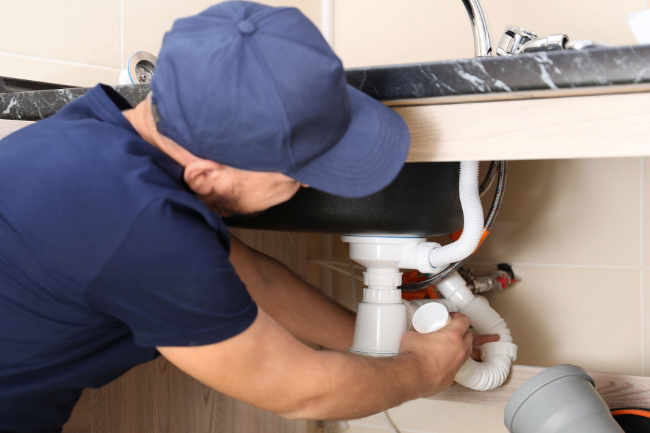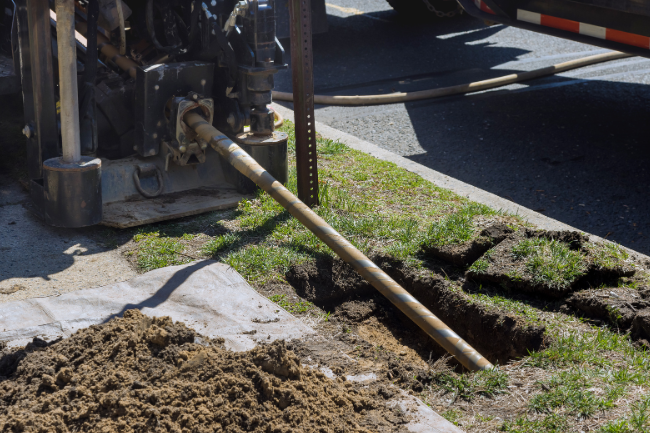Repairing irrigation pipe without digging
Posted by William Heinselman on
 One of the trickiest parts of running a top-tier winery is managing the flow of water to your vines. Too much or too little water can ruin the flavor of the finished product, or even cause crop damage that reduces your yields. Because of this, it is vital that the irrigation system that you use is kept in peak condition.
One of the trickiest parts of running a top-tier winery is managing the flow of water to your vines. Too much or too little water can ruin the flavor of the finished product, or even cause crop damage that reduces your yields. Because of this, it is vital that the irrigation system that you use is kept in peak condition.
There are a great many different irrigation systems that each have different benefits and drawbacks, such as the surface irrigation techniques of border and furrow irrigation that are relatively inexpensive to install, or sprinkler and drip systems that are more water-efficient over time. Regardless of which irrigation system you chose to employ when you began your winery, they all depend on access to a reliable supply of clean water.
The Importance of Proper Maintenance
These systems are fed by water pipes that have been extended to reach your fields, and if the integrity of these pipes becomes compromised, the integrity of your crop is threatened. Soil intrusion into your water pipes can carry bacterial contaminants or salt to your entire crop, ruining the whole harvest.
Another consequence that is almost as bad as the spread of contagion is that a break in the water line can cause a drop in water pressure. Without sufficient water pressure, a sprinkler system cannot achieve the optimum spread required to provide moisture to all of the vines that need it.
This is not to even mention the potential costs of wasted water, or of the damage to the soil in the area where the leak occurs.
Unfortunately, when a leak occurs in the water line leading to your irrigation system, it is not often readily apparent. You could have a leak for a long time before the increased water costs and reduced efficiency of irrigation become severe enough to warn you of a problem.
The Problem With Trenching
For the irrigation system pipes that run below-ground, finding and repairing leaks using traditional trench repairs can be hideously expensive in the long-term. Why? Because:
- If the pipes in question run under any part of your crop, the process of digging up the damaged section will disrupt any plants in that area.
- Depending on the pipe material, you may have to excavate the entire length of the affected section. This increases the total area of the ground you have to rip up in order to fix it.
- Excavating pipes can expose sub-surface pollutants. Chemicals that accumulate below the surface of the soil, such as pesticides, can be accidentally exposed during the process of unearthing the damaged pipe. If the pipe excavation is not handled with care, you may end up contaminating your crop with the unearthed chemicals.
- Time spent repairing the pipe is time that the pipe is not providing water to your crop. If the weather is dry, this can cause damage to your crops as lush wine grapes become very expensive raisins. Traditional excavation methods for enacting repairs can take a long time to finish, since they require you to find the leak, dig up the pipe, determine what size and length of pipe is needed to replace the broken section, remove the old pipe, install the new line, seal it, and then refill the trench.
Instead of making your crops wait forever to receive proper water flow again, and having to tear up your winery's ground to dig up the pipe, you could take advantage of trenchless technology to make the repair quickly and effectively.
Why Use Trenchless Technology?
Using a trenchless repair method, such as CIPP (cured in place pipe) or pipe-bursting, eliminates the need to dig up a large trench in the middle of the vineyard, and the amount of time spent with the water off is only a few hours as opposed to a day or more. If you use a CIPP replacement method, you can essentially replace the pipe from the inside by placing a new lining within the pipe. This new lining is designed to last for more than 50 years, and resolves cracks, root intrusion, and chemical infiltration issues that may be plaguing your pipe.
Pipe bursting, on the other hand, sends a special device called an expander head through the old pipe. The expander head shreds up the old pipe as it passes through it. A new pipe attached to the back of the expander head is dragged into place as the head moves through the old pipe. The end result is a completely new pipe to replace your old, broken, or contaminant-filled pipe.
The best part of these trenchless solutions for your vineyard is that they require only the most minimal of intrusions into your soil, instead of long, deep trenches. This saves you time spent trying to relocate sensitive grape vines, reduces the impact on your vineyard's soil, and prevents damage to your crop.
For More Help…
If you have questions about how trenchless technology can benefit you and your vineyard, or you need help enacting a trenchless repair solution, contact your Sacramento area experts now.
Topics: Trenchless Technology


![Repiping Your Sacramento Home [6 Steps]](https://www.expresssewer.com/hs-fs/hubfs/plumbing%20tools%20and%20blueprints.jpeg?width=550)




